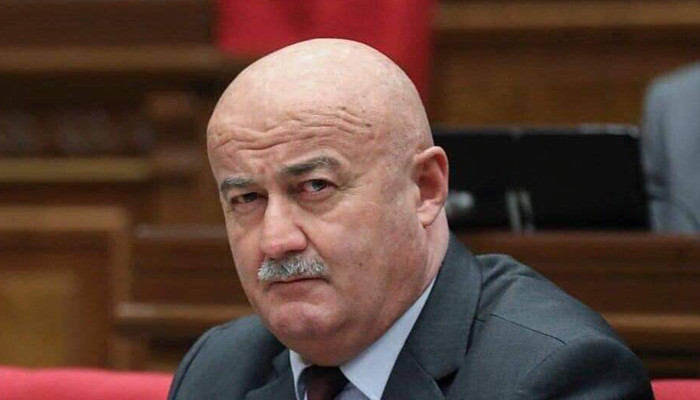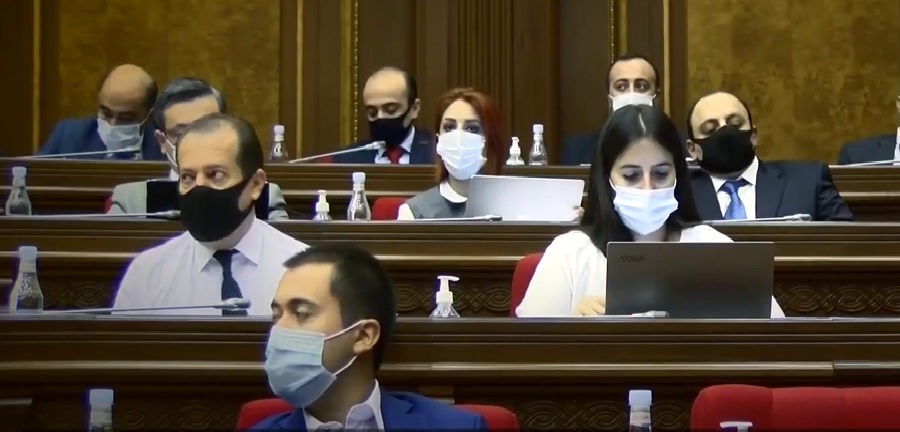The Committee to Protect Freedom of Expression has been conducting a monitoring of TV coverage of press-conferences of political and public figures in the press clubs of the capital for four months.
The results of the research will be published in detail after the analysis, however, the coverage of press-conferences of various political and public figures on the recent important event of the Armenian-Russian agreement revealed so many common trends that we considered it necessary to refer to them now.
Thus, the official visit of Russia’s President Dmitry Medvedev took place on August 19-21, during which a protocol on the extension of the Russian military base deployment in Armenia was signed, according to which the term of deployment was extended to 49 years instead of the previous 25.
Later, a non-official CSTO (Collective Security Treaty Organization) summit took place. It is natural that during and after these events the main topics of media coverage were the visit of the Russian President, Armenian-Russian relations, military bases, and security issues of the South Caucasus. In the press clubs of Yerevan, press-conferences have been organized on the above-mentioned topics to have the viewpoints of various political forces.
On August 23-31, about ten conferences were organized on this issue. We have followed six of them – on August 23, political expert Alexander Manasyan, and a political actor of the opposition Karapet Rubinyan, on August 24 representatives of “Heritage” Party Stepan Safaryan and Ruben Hakobyan (together), half an hour later in the same club President of European Integration NGO Karen Bekaryan, on August 25 Vice-President of the Republican Party of Armenia (RPA) Galust Sahakyan and on August 31 Armenian Revolutionary Federation (ARF) representative Armen Rustamyan.
The list of the speakers already suggests that the press clubs had provided diversity, more or less. As for the diversity on the issue on air, let’s compare by days:
On August 23, “De Facto” club hosted an oppositional figure, former Vice-President of the RA National Assembly Karapet Rubinyan. The speaker obviously was critical of the signed protocol and the state of the Armenian-Russian relations in general. No TVcompany had been recording the conference; consequently it had no TV coverage. A mere 30 minutes after Karapet Rubinyan’s conference, the same issue was discussed by Alexander Manasyan, head of theoretical philosophy and logic chair of Yerevan State University (YSU), head of “Academy of Political Research” NGO. Four TV companies broadcasted that conference.
The comparison of the press conferences in the same “De Facto” club on the following day was much more interesting. Representatives of “Heritage” Party Stepan Safaryan and Ruben Hakobyan were speaking about the issue. Four TV companies were recording the conference. 30 minutes later in the same club President of European Integration NGO Karen Bekaryan gave rather loyal estimations as compared to the critical viewpoints of “Heritage”. Seven TV companies were recording this conference. In particular from the perspective of journalistic creativity, principles of objectivity and impartiality, it is difficult to understand why the other three TV companies were not interested in the viewpoints of an opposition party.
On August 25, Vice-President of the RPA Galust Sahakyan was presenting his opinion on the same issue in “Henaran” club. The conference was covered by 10 TV companies broadcasting in the capital and in the whole republic. It is worth noting that this was the only press conference on the topic of the recent days that has been covered by “Haylur” news program of the Armenian Public TV.
At last, on August 31, representative of ARF Bureau Armen Rustamyan convened a press-conference on domestic and policy issues, including the Armenian-Russian relations. Six TV companies were recording it, including H1, which, however, did not refer to the speaker’s main ideas – the necessity of power shift, failures of the foreign policy, etc. It presented only the answer to a question that it was interested in (which had little connection with the discussion topic) in correlation with the answers to other actors.
This is what “pluralism” looks like on the Armenian TV air in a one-week period.
Mesrop Harutyunyan
CPFE Expert








